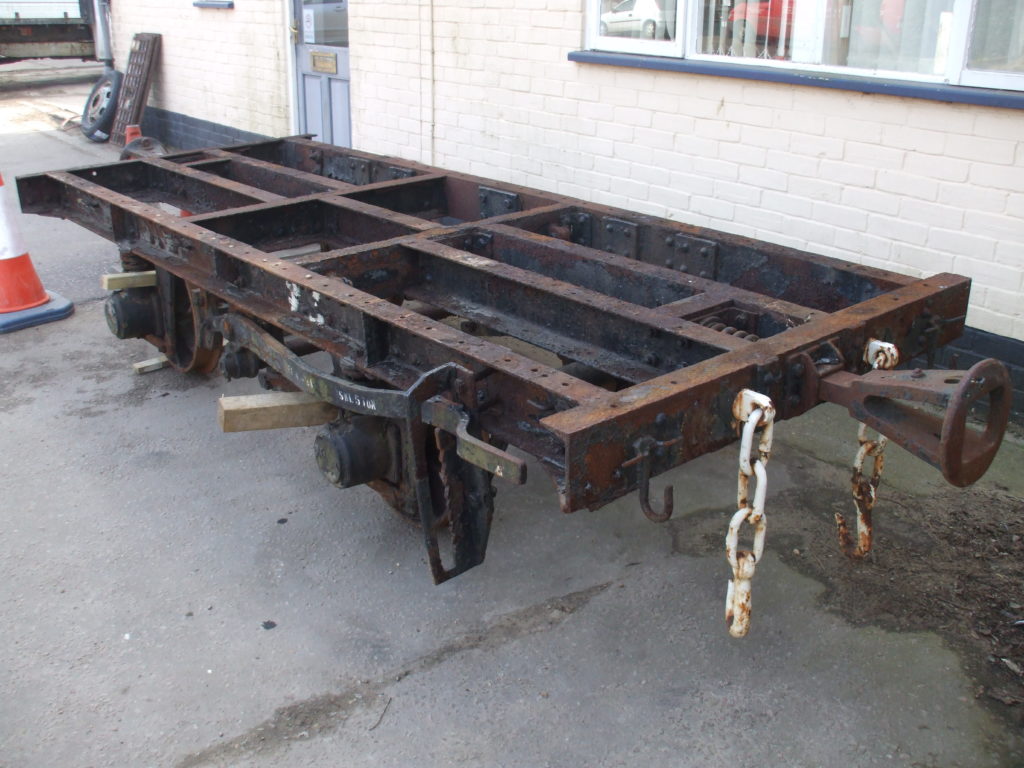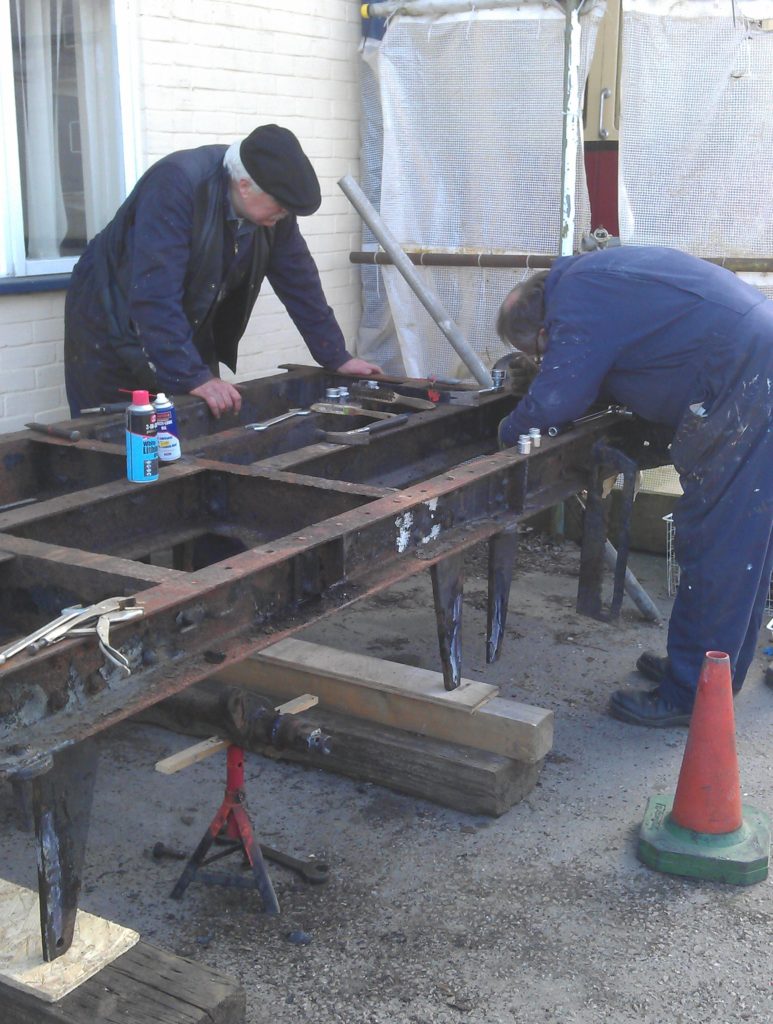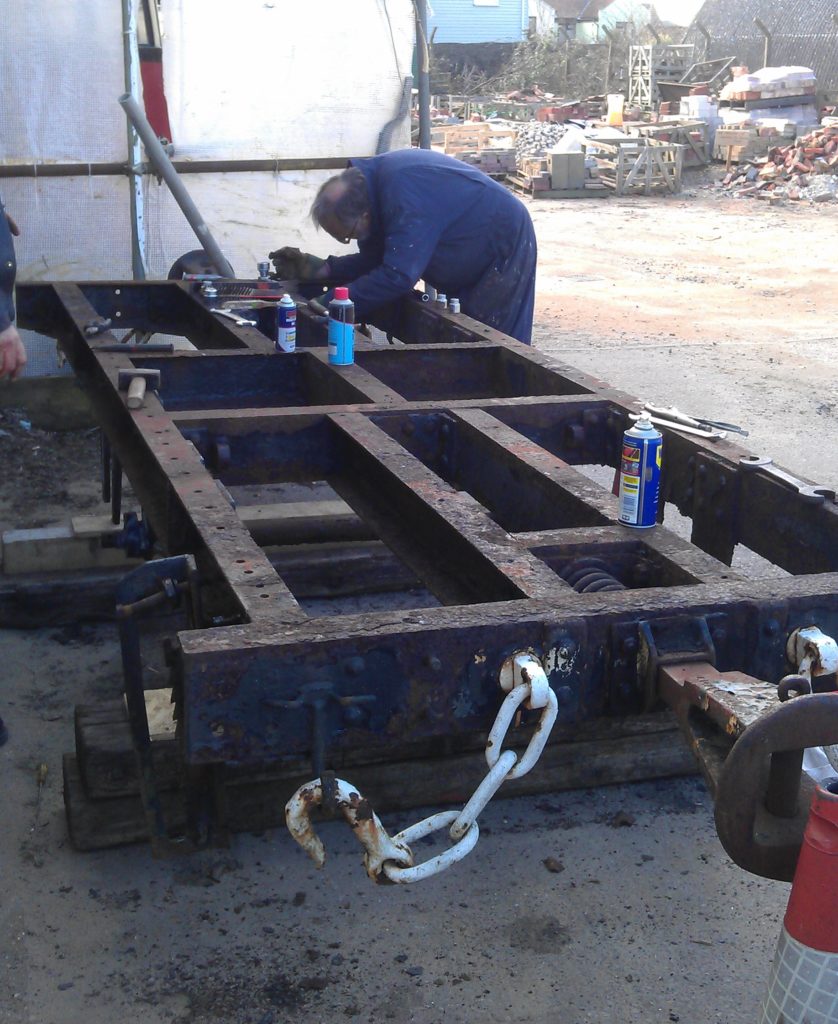
Several aspects of the Heritage Train Project are coming together. The Special Objectives for Local Disabled workshop in Lowestoft have made some very good suggestions about detailed design of the body of Van 40, and we agree – they are experts in wooden construction. The main timber structure will now be jointed and erected.
The 3D CAD Solidworks design by John Scott for locomotive “Blyth”’s working chassis is almost complete, and we will soon be able to make a more accurate estimate of individual component costs, and start to go out for quotations. Before that, however, we still need some new personnel in place: if you would like to be involved in this unique Project, please contact the Trust: you will need to be a Member to participate, but that’s easily arranged.
The donor underframe (sponsored by a generous member) for open wagon 41 has arrived at the workshop, courtesy of Richard Cowles of Lowestoft. In usual SR fashion, we descended on it like a swarm of soldier ants, and after two workdays it is now in a large number of pieces. As the underframe has to be widened (by 5.39”, in this case), shortened, and raised to SR coupling height, we have removed the wheels and axles, axleboxes, brake gear, and couplings. The side chains, which SR did not use, will go to our friends at the Mid-Suffolk, for one of their nineteenth-century GER coaches.
We don’t have the luxury of being a 2 foot railway, who can keep the wagon as it is, and just push the wheels in a bit from their 2’6” formation: with us, going to 3 foot gauge, everything has to be rebuilt. If it wasn’t for the difficulty of producing decent axleboxes and wheels, it might be easier to start from scratch.
However, everything (except for the axles, which will have to be cut out, and the headstocks, which are too short) will be re-used, in a fine example of the SRT’s green, recycling, credentials. The wagon is probably from Trecwn, and again a Royal Navy build – as the nation would have paid for it in the 1950s, it behoves SRT not to waste it.
Perhaps thanks to its RN vintage, it is of very rugged construction, and the riveting is first class – as I can confirm to my cost, having ground off many rivets during dismantling. The quality of the steel is very good, but the cast axleboxes seem to have been made from melted-down scrap, with a result, in quality terms, that you can imagine: they do the job, and that is, basically, it.


